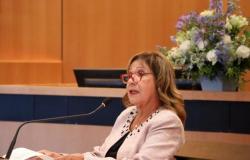A 4.6 magnitude earthquake occurred this Monday afternoon, at 4:48 pm, in Aserrí, San José. The epicenter was located 3 kilometers west of that canton, with a depth of 10 kilometers, according to data reviewed by the National Seismological Network.
For his part, Marino Protti, seismologist at the Volcanological and Seismological Observatory of Costa Rica (Ovsicori), said that the event had a magnitude of 4.4 and was located 3 km west of Salitrillos, in the south of Desamparados, with a depth of 7 kilometers.
This earthquake and a previous one that occurred at 4:23 pm occurred due to the fault system that exists south of the Central Valley. As Protti explained, these are fault segments with a low potential to generate large earthquakes, but they can cause frequent seismicity. Protti confirmed that until 5:17 pm, 15 aftershocks to the earthquake were recorded. Additionally, the National Emergency Commission (CNE) announced that the earthquake was felt throughout the country; However, there were no reports of damage.
The seismologist detailed The nation that there are historical records of earthquakes that caused damage south of San José, but these cannot be associated with any particular fault.
The Seismic Engineering Laboratory of the University of Costa Rica reported that at least nine faults are found in the area, 10 km from the epicenter. The three closest are fault Sawmill (8 km long), fault Pirris-Pangolin-Frailes (50 km) and fails Jaris (40 km).
The mistake Sawmill It can generate earthquakes of up to 5.5 degrees; the failures Pirris-Pangolin-Frailes and Jaris They can produce one of 6.9 and its effect would occur in up to 2,427 km2.
Users on social networks reported the earthquake as strong and fast in different locations in San José, such as Pavas, Desamparados, Moravia and Curridabat. In Heredia, people described a movement of great intensity in the districts of San Pablo and San Rafael. Information was also recorded from the provinces of Alajuela and Cartago, where some residents claimed to have first heard a large roar prior to the earthquake itself.
Digital users additionally reported delays in receiving reports through the Ovsicori application, available for Android and iPhone, which came into operation in June 2023 with the aim of notifying Costa Ricans early about these movements. However, a year later, in June of this year, the Observatory reported that there is a considerable delay in issuing alerts. The failure in the system, at that time, had been reported for weeks and, according to Protti, the correction of the system is not yet ready.
According to Ovsicori’s initial message on networks about the system failure, the Institute uses a free Google (TM) messaging service, which, apparently, degraded its operability suddenly and without any explanation. This resulted in alerts, which previously could be issued in a matter of two to five seconds, now taking up to tens of seconds, so they can no longer ensure that said announcements reach users prior to the arrival of the seismic shock.
READ MORE: Ovsicori reports delay in issuing earthquake alerts
Tremor with epicenter in Aserrí felt in several parts of the country. Photo: Ovsicori






